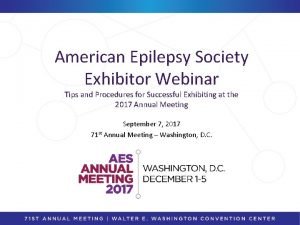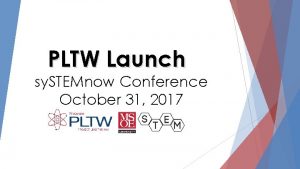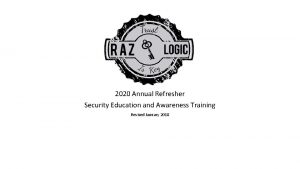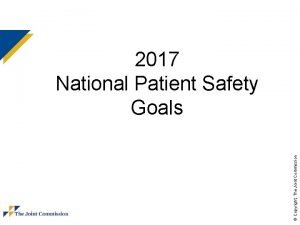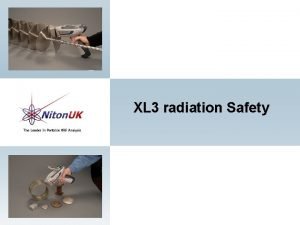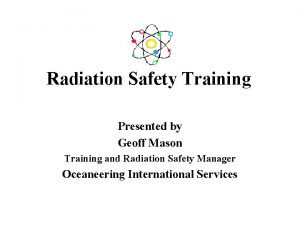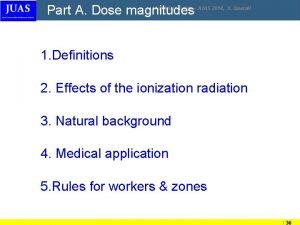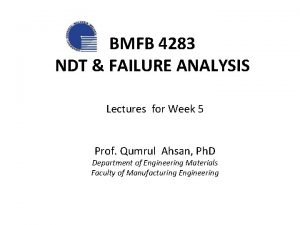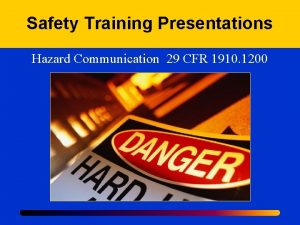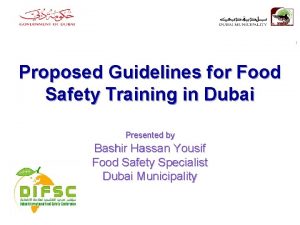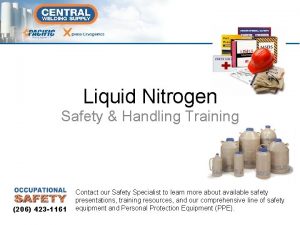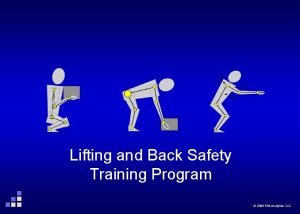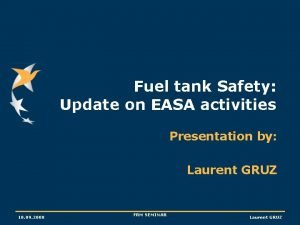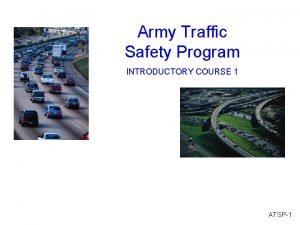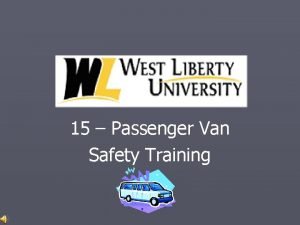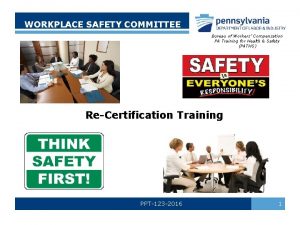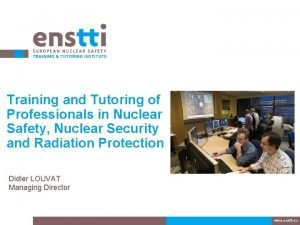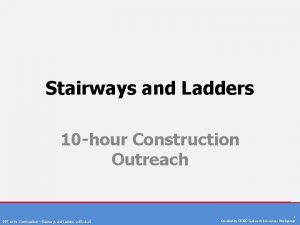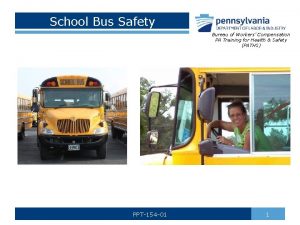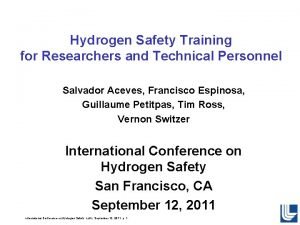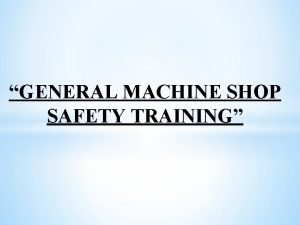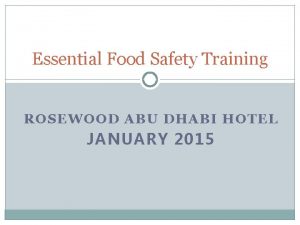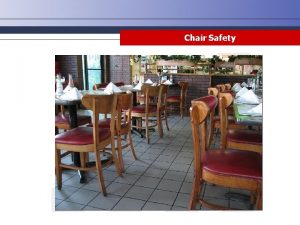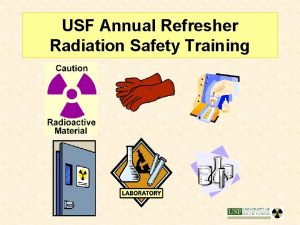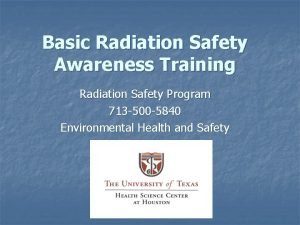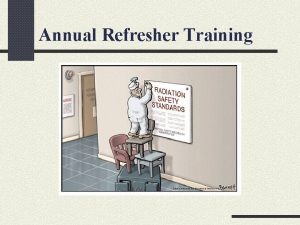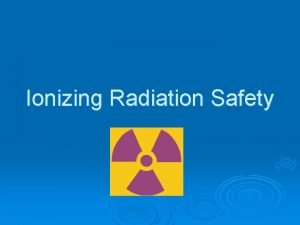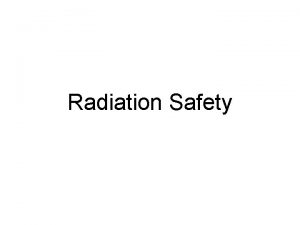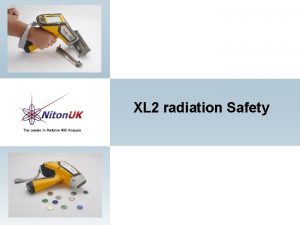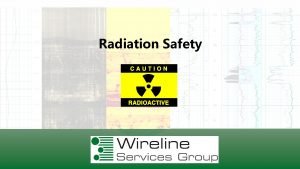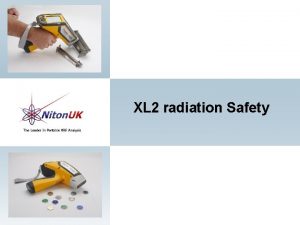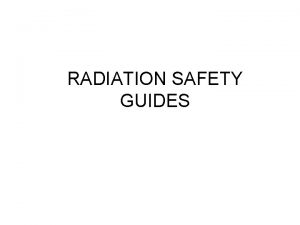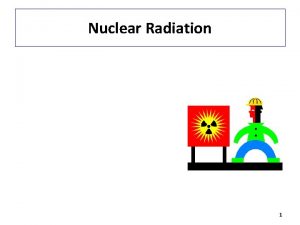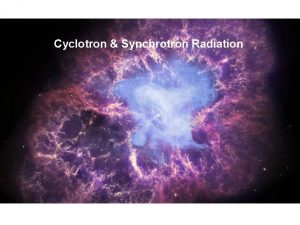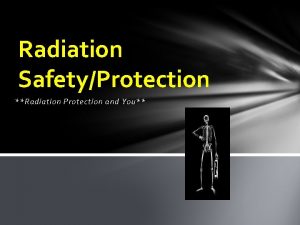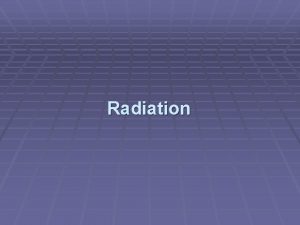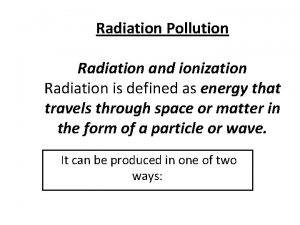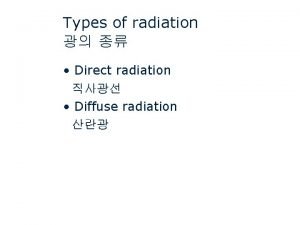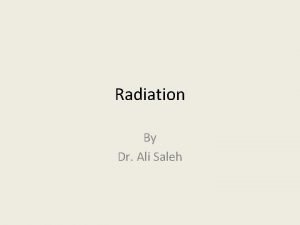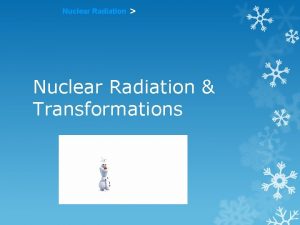ANNUAL RADIATION SAFETY TRAINING 2017 Annual radiation safety





























- Slides: 29

ANNUAL RADIATION SAFETY TRAINING 2017

• Annual radiation safety training is required of all sublicensees and personnel and/or students who work in an area where radiation is produced or sources are utilized.

The biggest change for this year is the way that radioactive wastes are managed in the laboratory.

• These changes will be similar to those which affect chemical waste.

• When radioactive wastes are generated it is placed in temporary storage within the lab where it was generated. This area is designated as a Satellite Accumulation Area (SAA) for radioactive wastes.

• There a few specific rules that apply to an SAA, but for the most part radioactive waste is managed as it has been for the last few years.

• The SAA must be approved by EHS and designated by signage that will be provided by EHS.

• SAA radioactive waste must be stored in the same room as the material is generated or in an adjacent room under the same sublicensee.

• Containers must be kept closed and only opened when material is being added.

• Containers must not be leaking and must be compatible with the contents.

• Containers must be labeled with the RSO number, isotope and amount of radioactive material present in the container. If chemical wastes are present they must also be identified.

• The way to schedule a pickup is by using the EHS web site. Under the Research heading select radiation safety, then Request Pickup. Material should be picked up by EHS within 3 days of putting it in the SAA.

• Once material is picked up it is taken to the radioactive waste storage area to be processed and stored.

• In the event of a spill or emergency alert others and contact EHS at 348 -5905. If needed contact UAPD at 3485454. EHS has a fully equipped haz mat response team. In the event of a fire evacuate.

• Radioactive waste management is very complex and the regulations are extensive. If you have any questions or need assistance contact EHS at 3485905.

• These new waste management requirements will take effect Janurary of 2018. EHS will be contacting all affected sublicensees this fall to establish SAA’s and review the details.

• EHS has added a new employee who will be working in radiation safety. She is Telisa Goins. She has completed the 40 hour RSO course and has been approved by the state as Assistant RSO.

Completion • You are almost finished with your annual training for 2017. In order to get credit for completion answer the following 10 questions. Email the answers to EHS along with the information requested on the last slide following question number ten.

• 1. Who is required to complete annual training? • A. everyone who works with sources of radiation • B. professors • C. sublicensees • D. students

• 2. Radioactive waste is placed _________. • A. in bags • B. within the designated SAA for radiation waste • C. in storage • D. in specific DOT containers

• 3. The radiation waste SAA is _________. • A. approved by EHS and designated by signage • B. located in departmental offices • C. only for chemical waste • D. changed annually

• 4. Containers must be __________. • A. red • B. emptied when full • C. 55 gallon drums • D. kept closed

• 5. Containers must be ______. • A. 55 gallon drums • B. red • C. compatible with the waste • D. disposable

• 6. Containers are labeled with____. • A. RSO number, isotope and amount of activity • B. room number, PI, protocol number • C. contents • D. emergency information

• 7. Schedule a pickup by __________. • A. contacting the RSO • B. notifying the Chair of the RCAC • C. signing up on the waiting list • D. complete a pickup request on the EHS web site

• 8. _______ is responsible for picking up and managing radioactive waste. • A. The sublicensee • B. The NRC • C. EHS • D. The Radiation Control Advisory Committee

• 9. If you need assistance with a spill contact __________. • A. the NRC • B. your nearest physicist • C. EHS • D. housekeeping

• 10. The new radioactive waste requirements will take effect ____. • A. immediately • B. Jan 2018 • C. Fall 2018 • D. November 17, 2015

• Email your answers to the 10 questions to tgoins@fa. ua. edu along with your name, CWID, the room number and building where you will be working with radiation sources. You must do this to get credit for annual training.
 Njdv
Njdv American epilepsy society annual meeting 2017
American epilepsy society annual meeting 2017 Safety care certification
Safety care certification Pltw launch modules
Pltw launch modules Annual security awareness refresher
Annual security awareness refresher National patient safety goals 2017
National patient safety goals 2017 Radiation safety
Radiation safety Radiation safety
Radiation safety Background radiation
Background radiation Radiation safety
Radiation safety Training is expensive without training it is more expensive
Training is expensive without training it is more expensive Perbedaan on the job training dan off the job training
Perbedaan on the job training dan off the job training Aggression replacement training facilitator training
Aggression replacement training facilitator training 29 cfr 1910 osha 178
29 cfr 1910 osha 178 Food hygiene training in dubai
Food hygiene training in dubai Liquid nitrogen safety training
Liquid nitrogen safety training Back safety training
Back safety training Fuel tank safety training questions
Fuel tank safety training questions Firefighter motto
Firefighter motto Army traffic safety training program
Army traffic safety training program 15 passenger van safety training
15 passenger van safety training Pa state inspection checklist form
Pa state inspection checklist form Nuclear safety training
Nuclear safety training A double cleated ladder should be provided
A double cleated ladder should be provided Flagman safety training ppt
Flagman safety training ppt Hydrogen safety training
Hydrogen safety training Machine shop safety training
Machine shop safety training Food safety training abu dhabi
Food safety training abu dhabi Dilbert chair safety training
Dilbert chair safety training Boiler safety training ppt
Boiler safety training ppt

